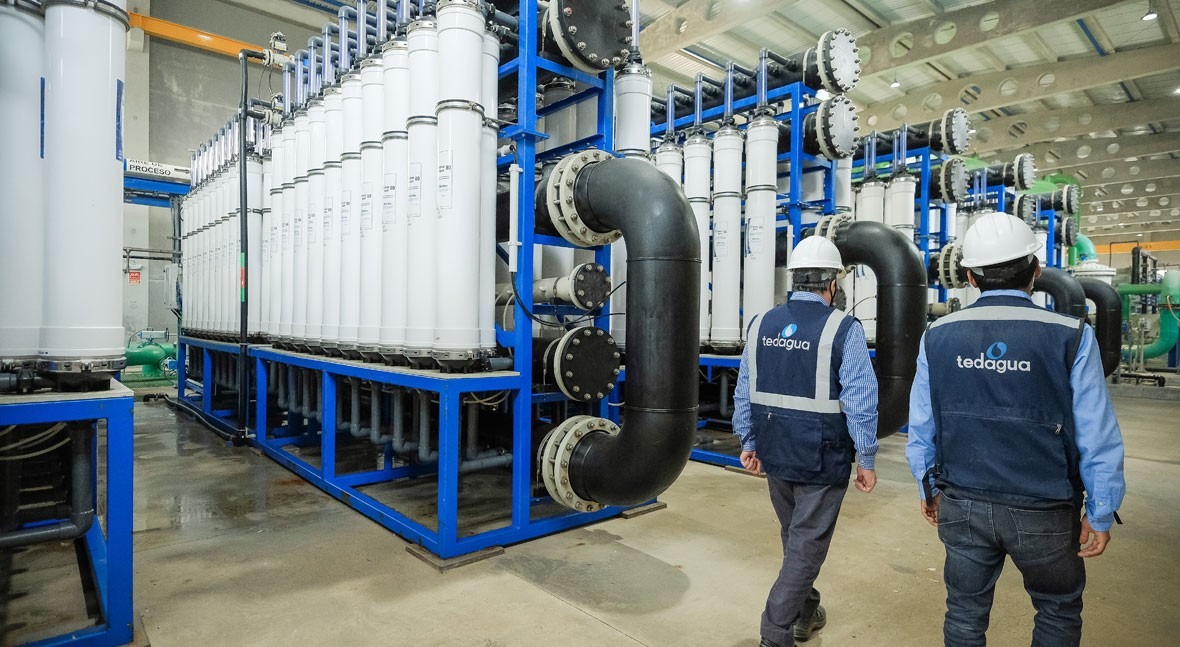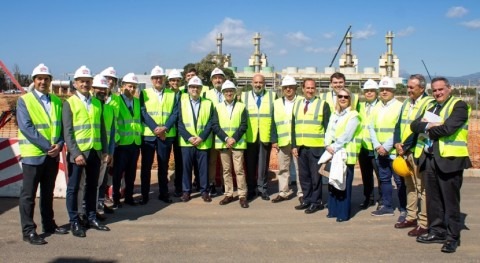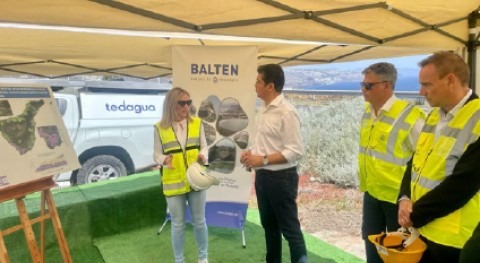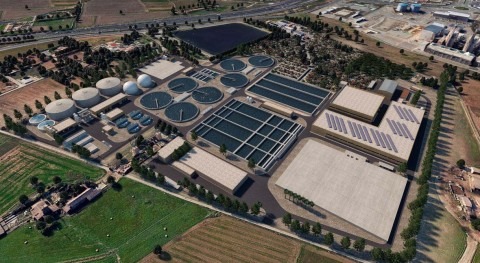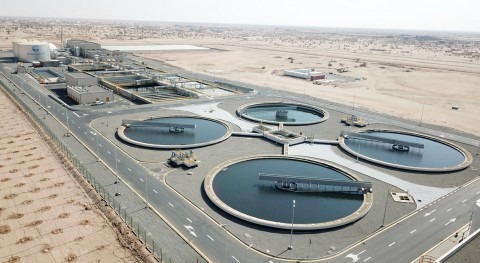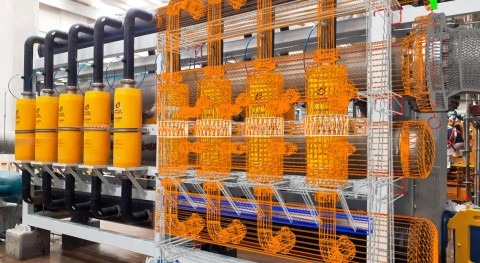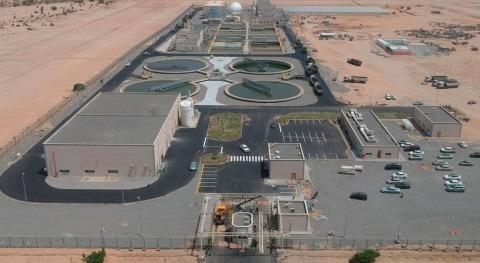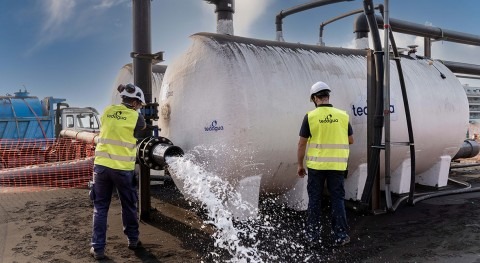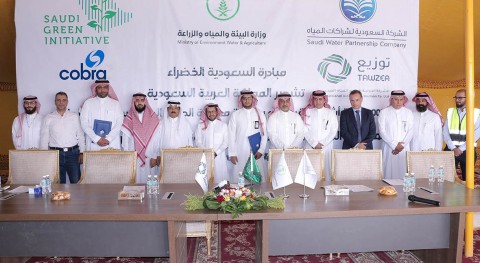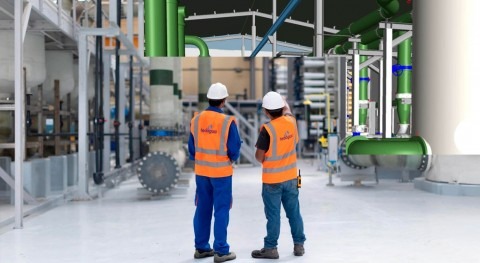The districts of Santa María del Mar, San Bartolo, Punta Hermosa and Punta Negra - located south of Lima on the Pan-American Highway - have seen the quality of their inhabitants' lives change radically. Tedagua has commissioned and delivered all the facilities that make up the PROVISUR Project - a project that, for the first time, combines under one single contract the design, supply, construction and implementation of all facilities related to the Water Management Cycle within this large area, as well as the licence to operate the treatment plants for 25 years.
Thanks to the public-private collaboration between the Ministry of House Construction and Sanitation, SEDAPAL (Lima's drinking water and sewerage service) and Tedagua, all administrative and technical challenges involved in a project of this size have been successfully overcome. After obtaining approval for all relevant permits, including the environmental impact study and approvals from the affected municipalities, Tedagua was able to carry out the complete engineering, construction and commissioning of the system.
The component parts of the PROVISUR project include seawater intake, a seawater desalination plant, drinking water storage, high- and low-pressure drinking water distribution network, domestic connections, sewerage connections, sewage network, wastewater pumping stations, wastewater treatment plant and submarine outfall.
As the contract includes all aspects of the water management cycle for such an extensive area, it has been possible to take a holistic approach to the design, and adapt the design of each component to actual requirements.
After obtaining approval for all permits, Tedagua carried out the complete engineering, construction and commissioning of the system
The districts in the south of Lima covered by this project share a number of differentiating features: all are located along more than 10km of the South Pan-American Highway and have spectacular beaches as well as very well-known and recognised seaside resorts.
The area chosen to locate the treatment facilities and the marine works is Santa María del Mar. This beautiful district has many homes for people who enjoy the local seaside resorts. The integration of the treatment facilities into this area has always been designed with respect for the ways it is used, and minimising visual, sound and traffic impacts.
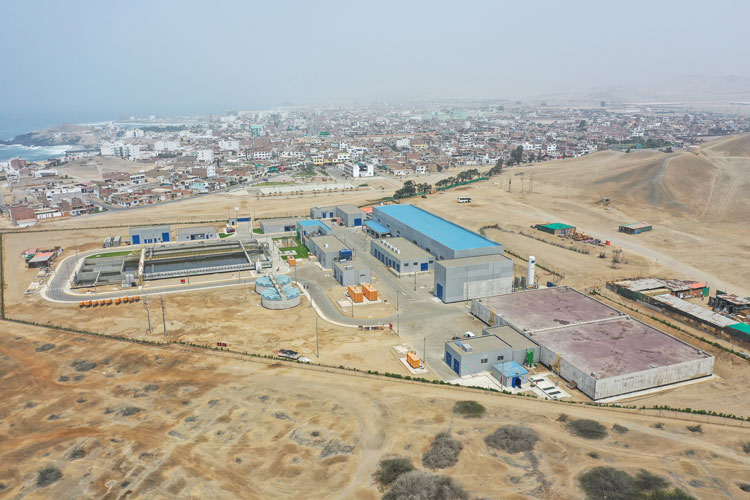
As a key global player in the water management cycle, Tedagua is taking a further step forward by assuming a leading role in this type of project, in which all the necessary infrastructure for the management of the end-to-end water cycle is built, starting from scratch, and demonstrating its capacity to face increasingly demanding challenges.
The construction contract has been structured around several components:
- Component A: consists of the temporary refurbishment of an old wastewater treatment plant, to operate whilst the rest of the components of the project were being executed, upon which it ceased to operate completely.
- Component B: includes the construction of the seawater desalination plant, the wastewater treatment plant, marine works and the entire drinking water distribution and sewerage network. The flow rates for drinking water production and wastewater treatment are 250 litres/second and 135 litres/second respectively.
- Component C: covers the expansion of the desalination plant to be able to produce 400 litres/second and the wastewater treatment plant to be able to treat 180 litres/second.
The concession agreement also includes the operation of the desalination and treatment facilities for 25 years.
Below is a detailed description of the different components of the infrastructures that were built as part of the PROVISUR Project.
Seawater intake
Seawater collection was done using a Johnson passive intake screen with a 5 mm slot width, positioned 535 metres from the beach of Santa María del Mar, at a depth of 17 metres. The design of the screen, built in super duplex steel, ensures that water passes through it slowly in order to respect marine life and minimise the environmental impact. The screen is cleaned by injecting counter-flow compressed air.
As the contract included all aspects of the water management cycle, it was possible to take a holistic approach to the design
From the passive intake screen, the water flows through a 1200 mm diameter high-density polyethylene (HDPE) pipe installed on the seabed for a length of 200 metres until it split into two 560 mm-diameter HDPE pipes which lead to the pumping station, at a distance of 335 metres.
Seawater pumping station
The design and execution of the seawater pumping station was a major challenge in which Tedagua deployed all its execution capabilities to align the effectiveness and safety of the facility's operation with the requirements of the area. Indeed, the pressure on the beachfront in terms of urbanisation is very high in the district of Santa María, where there are no available remaining permanent or temporary sites. In order to ensure the correct operation of this facility, it needed to be located as close as possible to the edge of the sea, with the least possible impact on the usual uses of local people. It was therefore decided to build the pumping station under a roundabout and a car park.
The whole facility - which includes four submersible pumps, electromagnetic flow meter, anti-water hammer tanks, air compressor, chemical dosing and electrical room with transformers and electric panels - is located underground under the public highway. It has an operational entrance used for normal access and for bringing in chemicals, as well as an upper entrance via the car park, for carrying out maintenance tasks.
.jpg)
By having a 5 mm passive intake screen installed as part of the sea intake, the pumping station can be operated without the need to place screens at the inlet channels. It also avoided the need for waste container extraction tasks and unpleasant smells in the local recreational area.
Seawater desalination plant
One of the special features of this major project is that the seawater desalination plant shares a site with the wastewater treatment plant. This has allowed Tedagua's team to find synergies and opportunities for optimisation as well as meet challenges in a way that would not have been possible if the plants were in different locations. The site chosen for the treatment plants covers an area of about 41,000 m2 and is located around 900 metres from the coast.
The treatment line chosen for this project includes dissolved air flotation (DAF), self-cleaning filters, ultrafiltration, reverse osmosis, CO2 injection and calcite contact beds. The design foresaw the production of two lines to satisfy Component B of the contract as well as a third one for Component C.
The pre-treatment process is extraordinarily robust, and ensures a very high quality of pre-treated water. Dissolved air flotation provides the facility with a high level of reliability and it can remain operational even during red tide events. Prior to flotation, coagulant is dosed in-line using static mixers.
One of the special features of this major project is that the seawater desalination plant shares a site with the wastewater treatment plant
KWI was selected as the DAF technology supplier, using 3 lines, each with its own flocculation and flotation chamber. The DAF can be bypassed if deemed appropriate by the plant operator, in situations where the quality of the water is good, in order to improve the facility's energy efficiency.
Both the recirculation pumps and ultrafiltration feed pumps draw water from the clarified water tank. Ultrafiltration is located in the process building. There are six racks each with 79 Hydranautics HYDRAcap MAX 80 membranes. The use of ultrafiltration as a pre-treatment for reverse osmosis ensures a very high permeate quality, with a very low fouling index (SDI) and a recovery rate of more than 96%. In ultrafiltration, removal of all solids larger than 0.1 micron is achieved using PVDF membranes with an inside-out filtration arrangement.
The heart of the plant consists of three reverse osmosis lines, each capable of producing almost 12,000 m3/day of permeate water. The reverse osmosis recovery rate is 45% - in line with current industry standards for this type of water.
A configuration with isobaric-chamber energy recovery devices has been chosen for each line. In this way, approximately 50% of the water is pressurised by means of isobaric chambers, reusing 96% of the energy in the brine.
Energy recovery from the reverse osmosis modules is done using racks of 10 ERI PX-Q300 elements, which ensure energy recovery of over 96%.
As a key global player in the water management cycle, Tedagua is taking a further step by assuming a leading role in this type of project
After reverse osmosis, the water has lost more than 99% of the salts that it originally contained. To be fit for consumption, it must be remineralised until it reaches the parameters recommended by the World Health Organisation. For this purpose, a remineralisation and pH adjustment treatment process is carried out by injecting carbon dioxide into the permeate water stream, after which the water flows up through a contact bed of micronised calcite. This allows the required alkalinity and Langelier index parameters to be met.
To make the water drinkable, sodium hypochlorite is added afterwards. This ensures that the water is fit for human consumption and maintains its hygiene-sanitary parameters through the entire system right through to consumers' taps.
Once it has been made drinkable, the water is stored in two 5000 cubic metre tanks, located near the plant.
From these tanks, a pumping set consisting of three horizontal 220 kW centrifugal pumps provide all the energy the water requires to travel through the distribution system and reach all the homes covered by the PROVISUR Project under the necessary conditions.
Central drinking water storage reservoir
After the water has been pumped, it is lifted by the pumping unit referred to above to a reservoir located on top of a nearby hill. This reservoir has a capacity of almost 10,000 cubic metres and is built in two reinforced concrete chambers. It acts as a central reservoir for the PROVISUR system's drinking water distribution network.
Drinking water distribution network
Before the PROVISUR Project was implemented, the condition of the supply networks within the four municipalities was very poor: old networks, a lot of leaks, and often totally inoperative. In many cases, houses had individual water tanks supplied by tanker trucks.
From the central reservoir, a main distribution line of more than 9 km long and 400 to 700 mm diameter has been built. This primary line supplies five main areas that overlap with the four municipalities covered by the project: Santa María del Mar, San Bartolo, Punta Negra and Punta Hermosa, as well as a second area in San Bartolo.
.jpg)
The distribution network is perfectly hierarchical to ensure high levels of operability, in line with the standards set by SEDAPAL - the entity that operates the networks.
At the entrance to each area, a Sector Inlet Chamber (SIC) has been built. These SICs include sectorisation valves, flow meters with bypasses, shut-off valves, pressure-reducing valves in the mainline and in the bypass. Each SIC is remotely monitored continuously.
Each sector is further divided into sub-sectors, which include a maximum of 1,000 connections or batches.
The network also has venting, purge, pressure-reduction, and speed-reduction chambers, hydrants, domestic connections, and so on, which make this network a complete and perfectly manageable complex that adheres to the most up-to-date market standards.
A total of 17 subsectors have been built, with more than 10,500 connections and over 115 km of new pipes.
Sewerage network and pumping stations
As with the supply network, the PROVISUR Project includes a sewerage network to provide this service to the same people who benefit from the drinking water network.
Before the project, the sanitation situation was mixed: Santa María del Mar, San Bartolo and Punta Hermosa had sanitation and treatment stations that were in varying states of conservation. Punta Negra meanwhile completely lacked this service.
In order to adapt the effluent and enable part of the wastewater to be reused, a complete sewage network was designed and built in line with SEDAPAL's criteria.
The distribution network is perfectly hierarchical to ensure high levels of operability, in line with the standards set by SEDAPAL
The sewage network has been structured by the municipal area, discharging water into a main discharge pipe that largely follows the route of the Pan-American Highway, and carrying the wastewater to the treatment and reuse plant.
Due to the relief of the terrain, which is mostly flat with some ravines, it has been necessary to build and equip 19 Sewage Pumping Chambers (SPCs) to pump wastewater in certain sections. All the SPCs are located in insulated buildings with odour-treatment systems, pre-treatment with automatic stainless-steel screens, submersible pumps with redundancy, electrical panels and emergency generators. In addition, they all have safety valves. This comprehensive design ensures that no large solids are introduced into the network whilst also avoiding negative impacts on the environment.
As part of the work on the sewerage network, more than 4,900 household connections have been made or repaired, and more than 121 km of new sewerage pipes laid.
Wastewater treatment and reuse plant (WWTP)
All wastewater from the PROVISUR Project is pumped to the new wastewater treatment plant. A number of aspects of this plant make it unique worldwide. In particular, it is the only wastewater plant built on the same site as a seawater desalination plant.
In tackling this challenge, Tedagua prioritised safety in the supply of drinking water over any other criterion. As the site is unique and shared by both plants, it has been possible to share some services such as electricity supply, certain transformers, administrative elements, discharge points and so on, resulting in greater efficiency of the whole site.
To avoid any cross contamination from the treatment plant to the desalination plant, they have been located in different areas of the same site, whilst sharing the same urban infrastructure.

With regard to the WWTP treatment process, a pre-treatment operation has been built with two coarse screening lines (2x100%) by means of an automatic rake with a 25 mm slot width. After the coarse screening, there are two fine screen lines with 3 mm slot widths, followed by a grit and oil removal stage.
The entire pre-treatment process is located inside a closed and deodorised building, thus minimising both the impact on the environment and the possibility of contamination with the desalination plant.
Following pre-treatment, the wastewater moves on to be biologically treated. For this, Xylem's ICEAS-ABJ SBR technology has been chosen. This batch reactor technology offers the advantages of the SBR, with its high levels of efficiency and adaptation to the variability in terms of water conditions. At the same time, however, it works with a constant feed to the reactors. It was this flexibility and guaranteed efficiency that led Tedagua to select this technology for a flagship project like PROVISUR.
The heart of the plant consists of three reverse osmosis lines, each capable of producing almost 12,000 m3/day of permeate water
The contractual analytical parameters allow for an inlet contamination of up to 500 ppm BOD5, 300 ppm TSS and 1000 ppm COD. The challenge that Tedagua accepted in regard to the output values guarantees that the effluent from the WWTP is of the necessary quality to be reused for irrigation and animal drinking water in accordance with DS 002-2008 MINAM, category 3.
To achieve this quality at the outlet of the WWTP, a chlorination stage with sodium hypochlorite has been included.
The tertiary treatment is done using two filters (2x100%) consisting of discs with a filtration degree of 10 microns that ensures values for helminth eggs at the outlet are less than 0.10 NMP/100 ml and TSS of less than 3 ppm.
The fact that the final sections of the wastewater discharge pipes are pumped from the SPC has been used to create a treatment facility that is based completely on gravity. This means that the wastewater does not have to be pumped from the inlet to the outlet after the disc filter and subsequent discharge into the sea.
This is another advantage of having designed the system holistically, as the needs of the WWTP and the wastewater discharge pipes have been matched to get the most out of the energy supplied.
The discharge from the WWTP is collected in a tank prior to ocean disposal. Water can be taken from this tank for reuse, as it meets all the parameters laid down under DS 002-2008 MINAM category 3.
Excess sludge produced during biological treatment is completely stabilised and pumped to two 12-metre diameter gravity thickeners, covered and deodorised to minimise the impact on the environment.
Finally, the sludge has the dewatering from it in two 10 m3/h centrifugal decanters, located in a closed and deodorised room inside the WWTP building. It is then stored in a hopper ready for removal by truck.
Underwater outfall
Another particular feature of the project that makes it a pioneer (and from which many models can be drawn for future plants) is that the underwater outfall is unique for the WWTP and the desalination plant.
From the plant, where the discharges from the WWTP and the desalination plant meet, discharges are directed to follow a route parallel to the seawater intake pipe to the Santa María del Mar beach. From here, two parallel DN560 pipes were laid by means of HDD drilling, with a length of 362 metres. Once past the stretch used for recreational purposes, the outfall continues via a DN900 HDPE pipe, laid on the seabed for a distance of 700 metres up to the diffusers.
The outfall loading chamber is located in the area of the WWTP, and both the overflow from the reuse chamber and the brine from the desalination plant flow into it. This pre-mixing of the discharges brings a number of environmental advantages:
- In regard to the WWTP effluent: although the effluent from this plant has already been chlorinated and filtered, the high salinity of the brine exerts a biocidal action on any potential microorganisms that are present in the discharge.
- In regard to the brine: the low salinity effluent from the WWTP dilutes the brine's high level of salinity.
In spite of all these benefits, they did not form part of the consideration when designing the outfall. Rather, at all times, this design prioritised safety in order to avoid any impact on the marine environment, whilst also taking into account that the discharge area is an area used for recreational and fishing purposes.
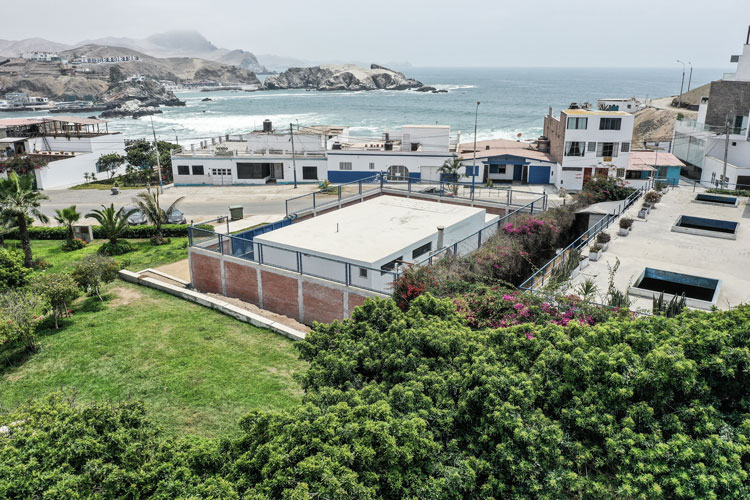
At Tedagua, we are very clear that one of the determining factors for this type of infrastructure is the environmental impact of discharges. One of the cornerstones of the way we operate - as enshrined in Cobra Group's environmental management policy - is to respect the environment and prevent, manage and reduce any environmental impact from our work.
For all these reasons, the design of the underwater outfall has taken account of the worst-case scenarios: discharge of wastewater only, discharge of brine only, and joint discharges. The design of the underwater diffusers ensures compliance with legal requirements and has no impact on the marine environment under any of these design scenarios. To achieve this, many near- and far-field dilution simulations were drawn up, with several field campaigns conducted in order to collect data to feed into the hydraulic models.
In conclusion: with the implementation of the PROVISUR project, the quality of life of affected residents have been improved through the provision of a reliable and good quality supply and drainage. At the same time, the protection of the environment and the economic activity in the area have been guaranteed.


